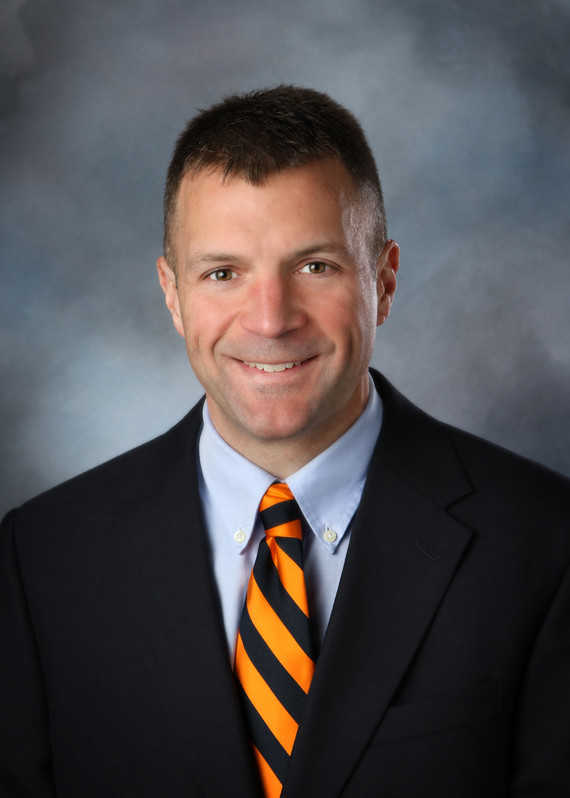SUBMIT. VOTE. WIN.
ENTRY FROM: 2016 Top Health Promotion Professionals
Nominee: Jeff Butz
Big Reach = Big Impact!
My name is Jeff Butz and I am the Wellness Director for Fond du Lac Area Businesses on Health (FABOH), an employer-owned coalition comprised of employers with between 15 and 350 employees. FABOH executes a value proposition on behalf of employers that offer employee health care coverage. One of the most significant elements of the value proposition is employee health and well-being. As Wellness Director, it is my responsibility to work with members to design, implement and evaluate wellness programing.
Prior to working at FABOH, I was employed as Manager of Wellness and Preventive Services for Affinity Health System, Wellness Coordinator for Motorola, and Health and Fitness Instructor for the National Institute for Fitness and Health (NIFS). My 16 year career in Health and Health promotion demonstrates successful leadership and accomplishment.

A life-long love of physical activity, personal wellness and helping others was the driving force behind earning a B.S. Degree in Exercise Science from the University of Wisconsin Oshkosh in 1999. After working for 6-years, I decided to continue my education. A Graduate Certificate in Health Care Management was earned in 2008 followed by a Masters of Public Administration degree with a Health Care emphasis in 2012, also at UW-Oshkosh. Simultaneous to the required course work, I achieved WELCOA Faculty Status in 2011. This combination of theory and practical knowledge provided the tools necessary to better serve our members.
During the August 2013 Board Meeting of the Wellness Council of Wisconsin, the Well City Fond du Lac strategic plan was approved. The opportunity to positively impact the health and well-being of the Fond du Lac employer community was officially set in motion. FABOH served as the catalyst for this initiative and was, in large measure, responsible for its successful completion. I have chosen to highlight this accomplishment due to the size and scope of the Well City project, the number of employees who were impacted by the effort, and the lasting effect that the application of the best practice WELCOA model will provide to participating employers in the years ahead.
Early on FABOH’s Executive Director and I conceived of the model that was used to successfully launch and manage the project. The approach chosen, “Intervention”, was closely aligned with the principles of WELCOA Benchmarks. A project Advisory Board was created to insure that the senior level management of each participating employer would be continually aware of the scope of the project, the status of employer-specific progress against objectives, and the availability of resources to facilitate success. The thought process was to create a structure to promote public support and accountability for results. Employer-specific data was collected, managed and shared during the initiative utilizing the Project Management Spreadsheet. Use of the spreadsheet provided a means by which the need for resources and assistance could be rapidly assessed and provided. In addition to the Advisory Board, committees were created and staffed to assist with the workload and provide perspective from a wide variety of participating organizations.
I would also like to point out that I created, offered and managed two turn-key exercise interventions, specifically designed to meet the application guidelines, for the Well City initiative. During the three-year period that these challenges were offered, more than half of the participating employers participated in both challenges and over 70% of the employees involved strongly agreed or agreed that they had increased daily physical activity due to the programing offered.
At the conclusion of the project timeline, 26 employers totaling 7440 employees earned Well Workplace designation. I personally played a significant role in the program design, program implementation and/or completion of the Well Workplace Application for 13 of the 26 organizations resulting in nine Gold Well-Workplace Awards and 4 Small Business Awards.
Project Outcomes:
• Well City Fond du Lac made the decision to evaluate the impact the initiative had on biometric values. A baseline report included data from 18 different organizations and over 7500 individuals. It is expected that the final analysis will be completed for review during the second calendar quarter of 2017.
• 80% of participating employers reported that they would reapply in the next 3-years to improve their designation.
• 100% of CEO’s agreed that the Well City initiative provided value to their organization and the Fond du Lac Community.
I have served as a leader in the field of health and wellness in a variety of ways:
• Well City Fond du Lac Leadership through work with four committees and the Advisory Board - 2013 - present
• Wellness Council of Wisconsin Board of Directors 2012 –present
• Internship program and mentoring for college students 2009-present
• Wellness leadership/consultation for FABOH members - 2008-present
Through my affiliation with the Wellness Council of Wisconsin and the webinars available through the WELCOA Institute, I promote the best-practice model for wellness and I stay abreast of new trends in the field. My advice to future leaders is to align strategies with a proven/flexible model for wellness, such as the WELCOA 7-Benchmarks, to ensure credibility, better outcomes and a greater opportunity to lead.
I take my personal health and wellness seriously. I maintain a healthy weight and biometric values by exercising at least 4 times a week and controlling my diet.
When working with our members there are two unique strategies I use to enhance the success of their programs.
1. Combining health coaching with an incentive program and allowing participants to choose the behavioral goal they feel is most important at that time. (Previous program only featured weight)
2. Use the Dentist Office approach – Tie the registration for a wellness program to an event in which most employees will attend. Registration for the Back on Track program was done at HRA follow-ups.
Impact of these changes:
1. The “Choose your own” program had 81.4% of employees complete the program. This was an increase of 48.1 percentage points over the weight only option.
a. 17 new health coaching participants
b. 75% achieved the goal set
2. Using the methodology above, we were able to increase registrations for the Back on Track program by 26.7% over last year.
In my opinion, two of the biggest threats and opportunities facing the Health promotion field in the next 5 years are prediabetes and the successful implementation of a Well-being model at small and medium sized employers.
• Prediabetes
o 1 out of every 3 American adults have prediabetes and only 11% know they have it
• Making the concept of Well-being relevant/scalable to small /mid-sized employers.
Our strategy:
Prediabetes:
• Ensure all at risk are aware of their condition and resources available through their employer – (HRA follow-ups, targeted mailings)
• Work with health coaches and primary care providers to ensure prediabetes is a focus area during contact with those at risk, directing them towards interventions.
Well-Being:
• Communicating the latest research on Well-being to members thereby leading to their conversion to this theory.
• Leveraging tangible examples of how the Well-being model has been implemented within other employers and how FABOH can support their efforts.
You can vote as often as you like. You may vote once per hour per entry.
When you come back, use the search function to find this entry.
You can vote as often as you like. You may vote once per hour per entry.
When you come back, use the search function to find this entry.


Comments are in order of newest to oldest
Post a Comment